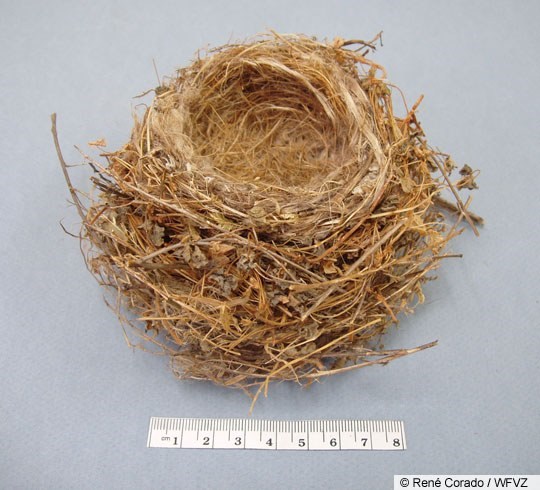Table Of Content

As adults, many finches migrate during temperature fluctuations, even traveling thousands of miles to find food or a more suitable climate. House Finches are common year round in human-altered areas throughout Washington. They are typically absent from montane forests and open, non-agricultural range.
The House Finch Mating, Nesting, and Feeding Habits
At feeders they will even feed on the bottom, cleansing up spilled seed, and they’ll rapidly flit into shrubbery or brush piles when startled. The throat, higher chest, and rump are strongly red, whereas the back is grey-brown with darker streaks. In human-altered settings, this finch outcompetes its shut relations, the Cassin’s Finch and the Purple Finch. Its presence has been thought of to be a significant explanation for the Purple Finch’s decline in western Washington.
When do baby house finches leave the nest?
Throughout their range, many House Finch populations migrate, either short distances latitudinally or altitudinally. Before 1945, populations of House Finches in the Okanogan Valley migrated south, but since 1945, House Finches in this area have been resident. House Finches are common birds that can be seen in parts of Canada, throughout the U.S., and Mexico. However, their populations have declined since the early 1960s. According to the IUCN Red List, they are a species of low concern. A House Finch will use a wide variety of materials for their nest.
Do house finches nest in backyards?

They’ll nest in cacti, coniferous and deciduous trees, and on rock ledges. It’s not uncommon to see them build nests on ledges, buildings, street lamps, hanging planters, and ivy. Occasionally House Finches will use abandoned nests that other birds created. However, some populations have undergone a steep decline since January 1994, owing to a disease called mycoplasmal conjunctivitis.
Baby finches disappear from nests - The Mercury News
Baby finches disappear from nests.
Posted: Thu, 19 Jun 2014 07:00:00 GMT [source]
House finches nest in a wide variety of sites, reflective of their diverse range. Common nest locations include cacti, conifer trees, palm trees, rock ledges, roof overhangs, hanging planters, windowsills, and abandoned buildings. On rare occasions, finches will use the abandoned nest of another bird or build in a tree cavity.
The younger go away from the nest after 12 to 15 days and could also be fed by the male for about two more weeks, whereas the feminine begins a second clutch. The feminine builds a lot of the nest, which is an open cup of grass, weeds, twigs, leaves, and rootlets, lined with feathers and different fine material. Shortly after hatching, she removes the empty eggshells from the nest. The hatchlings are pink with closed eyes and tufts of fluffy down. The feminine lays clutches of eggs from February by August, two or more broods per year with 2 to six eggs per brood, mostly four or 5. The egg-laying normally takes place within the morning, on the fee of 1 egg per day.
Wendall in the Wild: Mystery of the disappeared brown-headed cowbird chick - Wicked Local
Wendall in the Wild: Mystery of the disappeared brown-headed cowbird chick.
Posted: Fri, 27 May 2022 07:00:00 GMT [source]
Females have no red coloring, being primarily light brown with dark brown edges on their wings and tail. The male and female are similar in size, about five inches in length and weighing just under an ounce. While House Finches live in most parts of the United States they migrate short distances.
Finches: Mating Habits, Nesting & Eggs
Or perhaps you’re considering bringing one into your home and want to know more about its lifecycle. Did you know that the journey from egg to adulthood for a house finch is full of remarkable changes and developments? From hatching out of its egg to turning into an adult bird, there are several notable stages in a house finch’s life cycle. Predators are the most common threat to the birds and their eggs. This includes domestic cats, hawks, skunks, raccoons, snakes, blue jays, common grackles, and squirrels. But thanks to the birds being social, they tend to protect their kind and stay vigilant in case predators attack.
House Finches: Colors, Types, Migration & More
Unfortunately house finches are vulnerable to nest raiders and predators. The answer to the question ‘How many eggs does a house finch lay? ’ is complicated by the varying climates in which they live. The most popular areas for house finches include the eastern U.S.
Females collect various plant matter, twine, string, and hair, carry it back to the nest site, and begin building. The answer depends on the year and the season in which you’d like to see the birds. These residents are often found in the northeastern United States but they’re also considered ‘short-distance migrants’ and migrate south for the winter. In fact the species is so rare in the Northeast that many people don’t even know it’s there. House Finches are also common in southeastern Canada and southern Florida.
The symptoms of the disease are, scabby, swollen, runny, cloudy-looking, glassy eyes, mucous oozing from the nostrils, and an upper respiratory infection (Ley). Some sick birds recover, whereas others become blind and die of starvation or fall prey to cats and hawks (Salvante). The disease usually infects one eye first and then spreads to the other. Finches with partial vision loss may fly into bird feeders and windows, or allow bird-watchers to get close. With their eyes being shut it is very tough for them to feed themselves which is a cause of starvation (Gomizawa). There are consistent differences in song patterns among House Finches.


























